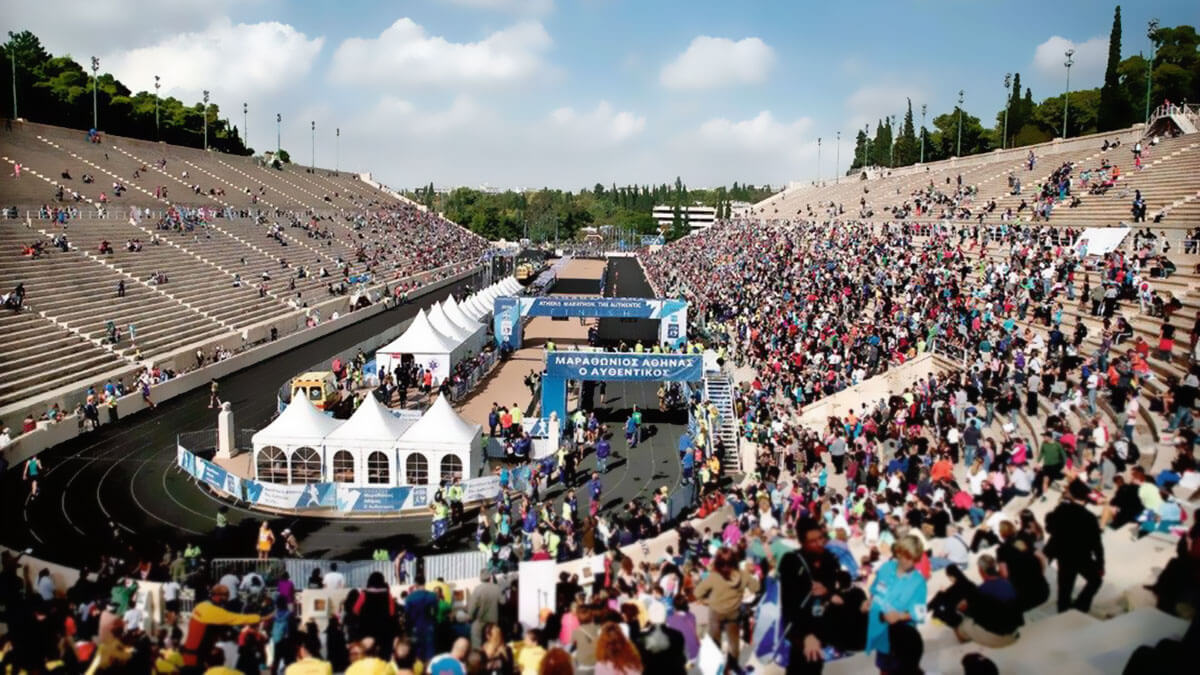Athens Marathon, the Authentic. The holy grail for every runner οn the planet, for its historical route and for the amazing and — one of a kind — finish line made by Spyros Louis inside Panathinaiko Stadio, in 1896.
Athens Marathon: A route to be remembered
The Athens Marathon is also well known for the difficulty pertinent to the route. It includes a 25km long ascent within 42.195, with a total ascent of approximately 400m. This historical and hilly route, as aforementioned, may challenge athletes and their minds, but it is also an age-long headache puzzling coaches in multiple levels. Athens is not like any other Marathon. Coaches must take this into consideration, before they can design the optimal training macrocycle.

Ergometrics assessments in preparation
As a coach myself, I have over 40 athletes entering the Athens Marathon every year, since 2013. The starting line and the difficulty level of the route is my main hurdle, as well. As a researcher, I get opportunities to execute ergometrics assessments. And having the scientific background to dictate what i need to study, measure and analyze in discovering the physiological characteristics and requirements a coach should build up on their athletes, adds great value during preparation for the Athens Marathon.
A study published
So, in 2019, Myrkos et.al published the study below:

Ergometric assessment, to measure VO2max, Lactate Thresholds, vVo2max etc.
Maximum oxygen uptake (VO2max), running economy, and lactate threshold (LT) velocity are interacting factors, which determine the running speed that can be sustained during an endurance event, such as the Athens Marathon. The aim of this study was to examine the physiological characteristics and the race pace characteristics, in relation to the aforementioned parameters of moderate (finish time < 240 min) and low-level runners (finish time > 240 min) of the Athens marathon race.
To that effect, 15 athletes (age, 41 ± 7 yrs; height, 174.5 ± 6.6 cm; and body mass, 72.8 ± 6.9 kg), who participated in the 2018 Athens marathon, performed an incremental test until exhaustion, 3 to 10 days before the race. That was to determine VO2max, maximal aerobic velocity (MAV), and the velocity at the 1st LT. The athletes were divided into a moderate level group (n = 8, finish time, 209.0 ± 10.4 min) and a low-level group (n = 7; finish time, 289.7 ± 25.1 min). Finish time was exported from the results, as posted on the official site of the organization.
Preparation for the ergometric assessment

Seconds before the test, everyone had a blood sample taken, to measure blood lactate concentration.
For the entire test sample, VO2max was 52.4 ± 5.2 mL/kg/min, MAV 15.5 ± 1.4 km/h, and velocity at the 1st LT 10.6 ± 1.4 km/h, corresponding to 68.0 ± 5.4% of MAV and to 75.0 ± 8.8% of VO2max.
The mean finish time was 246.7 ± 45.4 min, and the average running velocity 10.6 ± 1.9 km/h, which corresponded to 99.9 ± 7.5% of the velocity at the 1st LT and 75.0 ± 8.8% of VO2max.
Moderate level athletes, as compared to the low-level athletes had higher (p < 0.05) VO2max (55.5 ± 3.5 vs. 48.8 ± 4.8 mL/kg/min), MAV (16.5 ± 0.7 vs. 14.4 ± 1.2 km/h), and velocity at 1st LT (11.6 ± 0.8 vs. 9.4 ± 1.0 km/h, corresponding to 70.5 ± 4.0 vs. 65.2 ± 5.6% of MAV).
Medium-level athletes ran the Marathon at a higher velocity (12.1 ± 0.6 vs. 8.8 ± 0.9 km/h), corresponding to a higher percentage of MAV (73.8 ± 2.6 vs. 61.3 ± 42%), 1st LT (104.8 ± 4.8 vs. 94.2 ± 5.8%), and VO2max (80.0 ± 7.8 vs. 69.3 ± 6.5%).
What were the findings?
These findings suggest that athletes of different levels run the Athens Marathon at a rate corresponding to different percentages of key parameters of aerobic performance. It is recommended that the selected pace be applied individually, according to each athlete’s level.
Putting Science in Training
What with the scenic route of the Athens Marathon, the ergometric assessments and whatnot, I almost forgot to get to the real value you can get out of Science. As we learn more about our physiology, it becomes clear that Science is the way to find or define the best methods to exercise efficiently, avoid or eliminate injuries altogether and enjoy real results and real rewards. Coaches can use science in their training methods, for optimal training results, customized to every athlete. Today’s technology is here to help. And that’s what we’re hard at work accomplishing here, at Endogusto.
